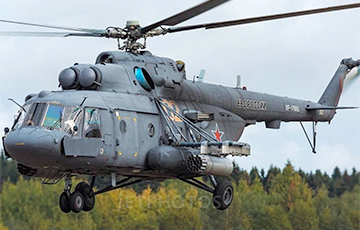‘Caught At Moment Of Taking Off’
3- 1.08.2024, 20:48
- 17,254

Ukrainian drones have become a threat to Russian helicopters.
A Russian Mi-8 helicopter crashed in Proletarsky district of occupied Donetsk. The helicopter was carrying wounded people and there is no information about the fate of the crew and passengers. A major Z-channel writes that the helicopter was hit by a Ukrainian FPV drone: ‘The Rosgvardiya 8 has been caught by a Russian FPV drone. It was caught at the moment of taking off.’ This is confirmed by another Z-channel close to aviation ‘It's all true about the Mi-8. Unfortunately,' writes the We Can Explain Telegram channel.
Pro-Russian channels have published videos of failed drone attacks on Russian helicopters - and this is the first time the Ukrainians have succeeded. This is probably the first FPV drone attack on a helicopter in history.
The distance from the front line to the crash site is about 30 kilometres. Z-bloggers claim that due to repeaters in the air, Ukrainian drones can fly at a distance of up to 20 kilometres (while Russian drones can fly at only 7 kilometres). According to many authors, the Russian army lags behind the Ukrainian army in the efficiency of drone use.
FPV drone attacks on helicopters could become a daily practice, military analyst Yan Matveev suggested in a conversation with ‘MO’. ‘A helicopter is a relatively slow aircraft, modern drones are quite capable of attacking it, especially during takeoff or landing. Now the commanders will either have to risk expensive and scarce machines or equip airfields further from the front.’
Drones have become crucial in the Ukrainian war, with both sides trying to compensate for artillery shortages with them. Due to the dominance of drones in the air and the lack of effective ways to combat them, the use of armoured vehicles is extremely difficult, and the Russian army's attempts to attack with columns of tanks and APCs lead to their rapid defeat. In order to be protected from drones, the Russian military is trying to install ‘sheds’ and ‘braziers’ on vehicles, the latter even on











